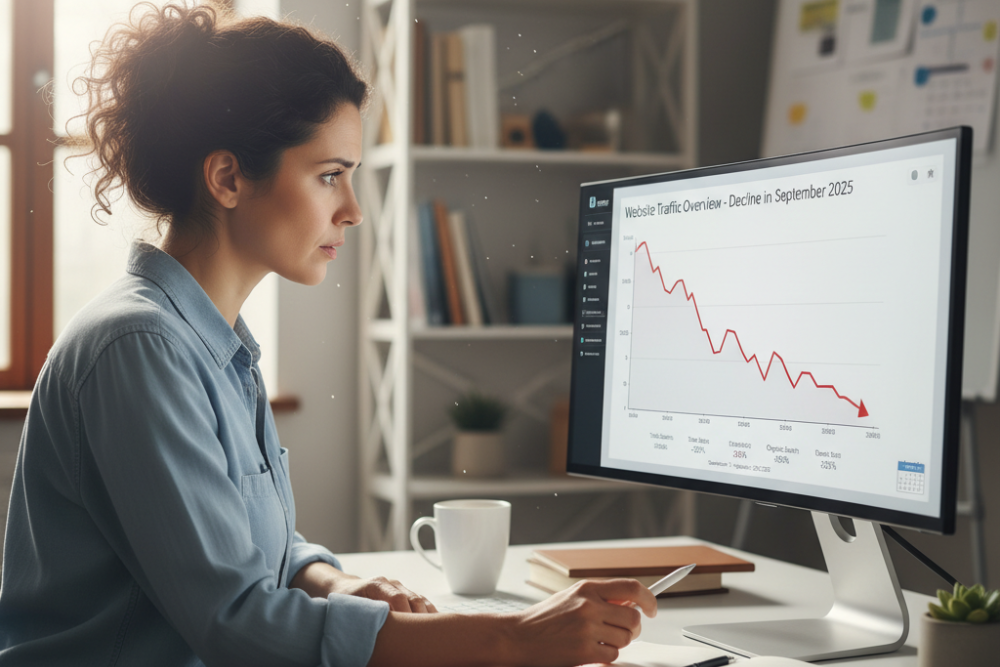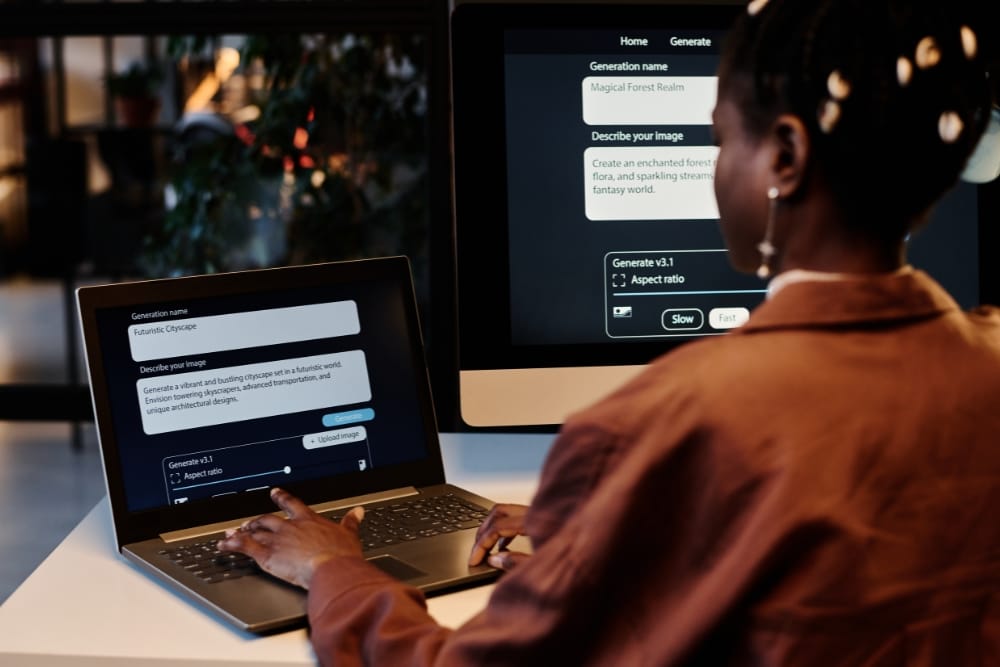If you live and breathe SEO like I do, you can smell when something’s off in Google Search before your analytics dashboard even loads.
That gut punch moment? It hit me around September 10th, 2025.
Traffic dipped. Rankings swung. Google Search Console showed impressions nosediving across the board. I thought maybe we missed a core update or made some technical SEO slip-up.
But then it hit harder: it wasn’t just one client. It was all of them.
Every. Single. One.
And that’s when I knew we were in trouble.
This article is for the SEO pros, founders, and marketers wondering what happened in September 2025 and how to make sense of the chaos.
What Happened in the September 2025 Update?
The September 2025 update wasn’t announced as a traditional core update, but its impact felt like one.
Turns out, it was the aftershock of the August 2025 spam update, a quiet killer that finished rolling out on September 22, taking down rankings, impressions, and visibility with it.
The symptoms?
- Sudden drops in impressions and clicks
- High volatility in keyword positions
- Indexing quirks
- Broken rank tracking tools
- Confused SEOs everywhere
Google didn’t say much, at least not immediately. But the SEO community lit up, realising the spam update had wider implications than we were led to believe.
Core Updates and Spam Shifts from 2022 to 2024
This isn’t the first time we’ve seen Google pull a fast one.
- The December 2024 spam update disrupted affiliate-heavy and AI-generated content sites.
- The August 2024 core update raised quality thresholds, especially for e-commerce and health.
- In 2023, the infamous September helpful content update crushed low-E-E-A-T sites.
- And in 2022, multiple updates “completed” silently – many with long-tail impacts that lasted months.
In each case, the ranking fluctuations weren’t just algorithmic, they were strategic. Google is training automated systems to favour what it sees as real, helpful, and trustworthy content.
And this latest update? It doubled down on that.
Google’s Core Algorithm Updates: 2023, 2024, and the 2025 Fallout
While no official core update was announced in September 2025, the August spam update felt like a stealth 2025 core update in disguise.
Google has blurred the lines between spam and quality.
You used to know when a broad core update was coming. Now? Spam updates roll out with core-level impact and ranking changes happen without warning.
According to Google Search Central, these updates are part of the ongoing effort to improve search by eliminating spammy, low-quality, or over-optimised pages.
Translation: if your content is templated, thin, or AI-churned — you’re on the chopping block.
Spam Updates, Link Spam, and the Latest Cleanup from Google
The August 2025 spam update was part of Google’s continued rollout of SpamBrain, its machine-learning system that detects link spam, cloaking, scraping, and more.
And here’s the kicker: it wasn’t just about obvious spam.
Legit sites were hit, especially those with:
- Weak internal linking
- Thin or duplicate content
- Overuse of AI without human editing
- Suspicious backlink patterns
- Over-optimised anchor text
- Pages written for ranking, not people
This link spam update didn’t come with a manual action warning. It was all automated systems learning on the fly.
One day you’re ranking. The next, you’re in the void.
Ready to rank smarter, not harder?
How Google Search Is Changing: AI Overviews and New SERP Behaviour
Meanwhile, Google has been busy rolling out AI overviews in more regions, altering how search results are displayed entirely.
These summaries push traditional blue links further down the page, meaning:
- Even if your ranking stays the same, your visibility drops
- Your page might no longer appear at the top
- Click-through rates decline without a clear reason to click
And with the quiet removal of tools like the &num=100 parameter (more on that below), tracking real visibility became a guessing game in September 2025.
Add it all up, and you’ve got a recipe for mass confusion in the SEO community.
E-commerce and SEO: Who Got Hit Hardest?
Let’s talk e-commerce.
Sites with massive product catalogs, thin category pages, and bloated tag archives were among the hardest hit.
The August 2025 spam update punished duplicate product descriptions, auto-generated filters, and weak internal link loops.
E-commerce teams that relied heavily on AI-generated summaries or outdated content structures felt it the most.
If your site still has 2020-era “Buy Now” pages with no value besides price… yeah, you’re in Google’s naughty list now.
Key Insights from Google Search Central and Barry Schwartz
Barry Schwartz, editor of Search Engine Roundtable, flagged high volatility between August and September 2025, connecting the dots between:
- The spam update
- The sudden GSC impression drops
- And the removal of the &num=100 parameter in SERPs
Even Google Search Central acknowledged major changes to SERP behaviour, recommending site owners “focus on quality” and ensure they are complying with spam policies.
But here’s the part that rubbed SEOs the wrong way: Google didn’t give much guidance beyond vague reassurances.
When the Update Rolled Out and What It Affected
Here’s a quick timeline for those who’ve been living inside their dashboards:
| Date | What Happened |
|---|---|
| Aug 26, 2025 | Spam update began rolling out globally |
| Sept 10–14 | Massive ranking swings observed; GSC impressions tank |
| Sept 15 | &num=100 parameter removed from SERPs |
| Sept 22 | Update completed, but volatility continues |
| Sept 25 | SEO community confirms it wasn’t just them |
So yes, the update took nearly a month to finish, but the impact was felt long before it was “done.”
Understanding the 2025 Core Update vs. the Broad Core Updates
This wasn’t a “broad core update” by label, but in terms of ranking impact, it absolutely was.
In fact, many believe the 2025 core update has already begun, it’s just being disguised as spam updates, UI changes, and AI integrations.
Remember: Google no longer bundles its big changes into single, named events. They’re spreading updates across a period of months, keeping site owners guessing.
Which means every time you see volatility now, you’re wondering: “Is this a core update, a spam filter, or did Google just sneeze?”
What Google Plans to Remove Next: Content, Links, or Both?
Let’s talk future-proofing.
Google’s trajectory is clear. They want to remove spammy content, irrelevant links, and anything that doesn’t add human value.
You can expect:
- More filtering of low-quality affiliate content
- Stronger devaluation of PBN-style backlinks
- Continued removal of sites that fail Core Web Vitals
- Stricter requirements for E-E-A-T signals
- Less tolerance for lazy AI-generated content
In short: the days of “good enough” SEO are done.
What This Means for Search Marketing in the AI Era
If your search marketing strategy still relies on keyword stuffing, long-tail saturation, or spinning articles, I’ve got bad news.
2025 is the year SEO meets survival of the smartest.
Your content needs to:
- Solve real user problems
- Offer something competitors don’t
- Demonstrate real-world expertise
- Build trust (reviews, authorship, credentials)
This isn’t about hacking the algorithm anymore. It’s about creating content that deserves to rank and being resilient to the next Google core update or spam filter.
SEO in a Post-September 2025 World
So let’s recap what we’ve learned from this beautiful mess:
- The August 2025 spam update, completed in September, tanked rankings for thousands of legitimate sites.
- Google removed the &num=100 SERP parameter, triggering a reporting crash in Search Console impressions.
- AI overviews are changing how search results appear, pushing organic listings down.
- E-commerce and AI-heavy content sites were hit hardest.
- Google isn’t giving us clear answers, so the SEO community is filling in the blanks.
This wasn’t your average update. It was a multi-layered disruption that mixed spam penalties, AI shifts, and UI changes.
FAQ: September 2025 SEO Update
1. What caused the sudden drop in Google Search rankings in September 2025?
The sharp decline in search rankings during September 2025 was primarily due to the August 2025 spam update, which completed rollout later that month. This update targeted spammy content, low-quality pages, and manipulative SEO practices. Many legitimate sites were affected due to outdated structures, poor internal linking, or excessive reliance on AI-generated content. The update’s impact was widespread across industries, creating major volatility in the search results.
2. Was the August 2025 spam update the same as a Google core update?
Not officially but it felt like one. While Google labeled it a spam update, its effects mirrored that of a broad core update, especially for sites with borderline or low-value content. Unlike the typical Google core update, which assesses overall site quality, the August 2025 spam update relied on automated systems to detect and demote what it considered spammy or unhelpful content, making it just as disruptive.
3. How do I know if my site was hit by the Google August 2025 spam update?
Check your Google Search Console data from late August to mid-September. If you noticed a sudden drop in impressions, clicks, or average position, especially with no technical SEO changes, your site may have been affected. Look for red flags like thin content, repetitive keyword use, low user engagement, or spammy backlinks. Tools like Ahrefs, SEMrush, and Search Engine Land’s coverage can help analyze ranking shifts and recovery paths.
4. Is the September 2025 update completed? How long did the rollout take?
Yes, the update completed on September 22, according to Google’s Search Status Dashboard. The rollout started on August 26, making it a month-long update. However, the impact may continue for weeks, as automated systems learn and recalibrate rankings. It may take time for ranking fluctuations to stabilize, especially for sites in competitive niches or those flagged by the update’s spam filters.
5. How can I recover from the Google August 2025 spam update?
Recovery starts with a content and technical SEO audit. Focus on improving content quality, ensuring pages add real value, removing or updating low-quality or AI-generated pages, and cleaning up spammy backlinks. Pay attention to Core Web Vitals, E-E-A-T principles, and user engagement. Use tools like Google Search Console, SEMrush, and Ahrefs to identify performance drops, and stay up to date with the latest SEO best practices as Google’s search continues evolving.




